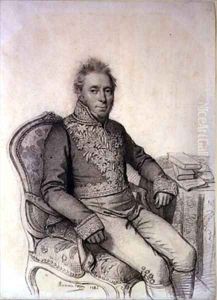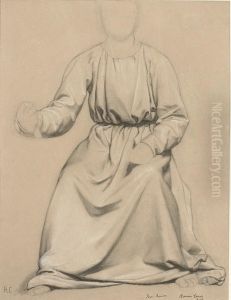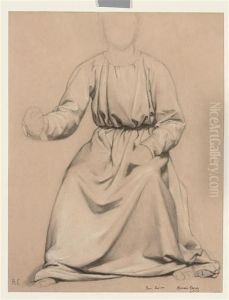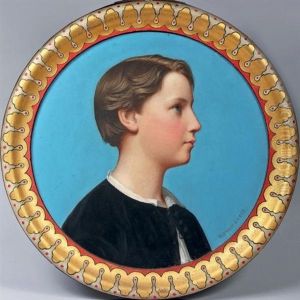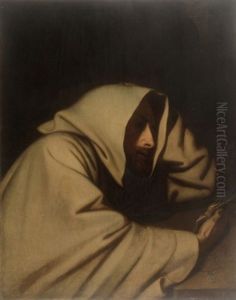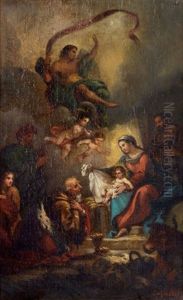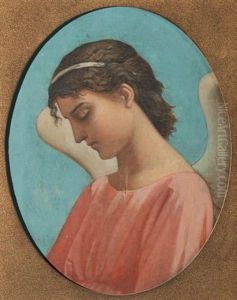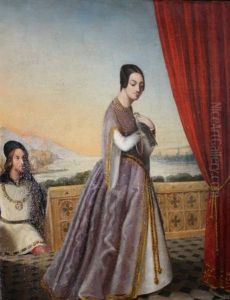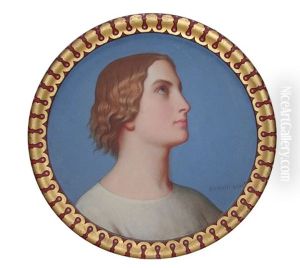Romain Cazes Paintings
Romain Cazes was a French painter born in the early 19th century, a period that was marked by significant social, political, and artistic shifts in Europe. Born on March 27, 1810, in Saint-Béat, Haute-Garonne, Cazes was a product of a time when the Romantic movement was in its twilight and the seeds of Realism and Impressionism were beginning to sprout. His artistic journey is a reflection of the transitional nature of this era, embodying the characteristics of academic art while hinting at the evolving preferences of the art world.
Educated at the prestigious École des Beaux-Arts in Paris, Cazes was a student of Jean-Auguste-Dominique Ingres, one of the most influential figures in 19th-century French art. Under Ingres's tutelage, Cazes developed a keen understanding of Neoclassical principles, which emphasized clarity of form, smoothness of line, and a meticulous approach to anatomy and proportion. This foundation is evident throughout Cazes's body of work, which predominantly features religious and historical subjects rendered with a degree of precision and formality reflective of his academic training.
Throughout his career, Cazes received several accolades and commissions that affirmed his status within the French art establishment. He participated in the Paris Salon, an essential venue for artists seeking recognition and patronage in the 19th century. His works were well-received, earning him medals in 1841 and 1846, which further solidified his reputation.
Despite his success, Romain Cazes's work is often overshadowed by his contemporaries who were at the forefront of the avant-garde movements of the late 19th and early 20th centuries. However, his contribution to French art, particularly within the academic tradition, remains noteworthy. His paintings are characterized by their refined technique, attention to detail, and the emotional depth they convey, embodying the transitional nature of French art during his lifetime.
Cazes's legacy is preserved in various French institutions, with examples of his work held in collections across the country. His commitment to academic art provides valuable insight into the period's aesthetic preferences and the broader historical context in which he worked. Romain Cazes died on January 29, 1881, leaving behind a body of work that, while perhaps not as celebrated as that of his more revolutionary peers, demonstrates the enduring appeal of classical beauty and technical mastery in painting.
